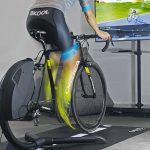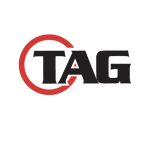Proving many of its critics wrong and highlighting the hot prospects for the health-tracking device category, Fitbit last week made a huge splash in its initial public offering. Shares opened at $30.40 on Thursday morning, up 52 percent from the IPO price of $20. They closed on the day up 48.4 percent, or $9.68, at $29.68.
The gains were even more impressive because the company had already increased its projected offering price and the number of shares it planned to sell two times due to heated demand from investors.
Initially, Fitbit planed to sell 29.9 million shares at prices ranging from $14 to $16 per share. Last Tuesday, it raised that price range to $17 to $19 and the number of shares it planned to sell to 34.5 million. On Wednesday night in officially pricing the deal, the IPO price came out at $20 and the size of the offering reached 36.6 million.
At the IPO price, Fitbit raised $732 million for itself and its selling stockholders. The deal will likely generate another $100 million for the company if underwriters exercise their over-allotment option to sell additional shares, which they normally do, especially in a hot deal.
The proceeds are expected to help Fitbit make investment in software, hardware and acquisitions, like its purchase earlier this year of FitStar, the developer of fitness apps.
Fitbit is the second U.S. wearable technology company to go public, following action camera-maker GoPro's hugely successful listing around this time last year.
The IPO price valued the eight-year-old company at $4.1 billion with the opening price valuing the company at a whopping $6.3 billion.
Described potentially as the “Shake Shack of fitness tech,” Fitbit ranks as one of the hotter IPOs so far this year with its proceeds ranking as the highest for a U.S.-listed tech company IPO this year, according to research firm Dealogic Ltd.
Founded in 2007, Fitbit provides a multiplatform approach to health and fitness, integrating mobile apps and websites with colorful tracking devices that can be worn as bracelets or clipped to clothing. The devices have gained popularity for their ability to count steps, monitor calories burned and track time spent sleeping, among other things, which appeals to health-conscious, data-obsessed consumers.
The fitness devices are part of an exploding wearable computing market. Touted as the next big thing in technology, wearable tech has spawned a dizzying array of Internet-connected wristwatches, “smart” clothing and jewelry and head-mounted devices.
Last year Fitbit, the leading fitness tracker, sold 10.9 million devices in 45,000 retail stores in more than 50 countries as well as online, according to the IPO's prospectus.
But Fitbit faces no shortage of competitors. Close rivals include Jawbone, Misfit and Garmin, along with China's Xiaomi Inc., which makes the Mi Band device. Jawbone recently sued Fitbit for allegedly poaching employees who spilled their sensitive corporate information. Other competitors include Apple Watch, Samsung Gear and other tech giants.
Investors were particularly concerned about the arrival of Apple Watch, which customers can now reserve for an in-store pickup.
But the strong market debut reinforces Fitbit’s bet that consumers will continue to buy fitness bands even as other, more complex smart watches like the Apple Watch and various Android competitors hit stores. Along with a built-in health-tracking feature, Apple Watch offers a range of additional features that connect to the iPhone, such as email and text notifications, apps and a navigation system. Prices for the Watch range from $549 to more than $1,000.
Indeed, many see an opportunity for Fitbit and other single-use fitness-driven devices to compete against multifunction ones like Apple Watch if they meet their focused purpose and are able to deliver a more friendly price point. Fitbit’s prices range from $59.95 to $249.95 and it packs a longer battery life than Apple.
Fitbit may face challenges competing against lower-priced competitors such as Xiaomi, which is offering a fitness tracker device in the U.S. for $15. But Fitbit offers more functionality, is just starting to launch an aggressive marketing push, and is developing an array of social tools and mobile apps to bond with the fitness community.
The IPO debut was also helped because Fitbit was one of the few companies to have gone public this year that is profitable. Sales at the company rose 174 percent last year to $745 million. In its first quarter, Fitbit's sales have tripled to $336.8 million.
But the projected outsized growth in the wearable market is expected by many to leave room for many niche players in the fitness wearables category.
Last week, IDC (International Data Corporation), the research firm, predicted 72.1 million wearable devices would be shipped in 2015, up a strong 173.3 percent from the 26.4 million units shipped in 2014. Shipment volumes are expected to experience a compound annual growth rate (CAGR) of 42.6 percent over the five-year forecast period, reaching 155.7 million units shipped in 2019.
In the first quarter of this year, Fitbit had a leading 34.2 percent of worldwide shipments of wearable device trackers, IDC estimated.
“The demand for basic wearables, those that do not run third party apps, has been absolutely astounding,” said Jitesh Ubrani, IDC’s senior research analyst, Worldwide Mobile Device Trackers. “Vendors like Fitbit and Xiaomi have helped propel the market with their sub-$100 bands, and IDC expects this momentum will continue throughout 2015.”
“We expect smart wearables, those capable of running third party apps, to take the lead in 2016,” added Ubrani. “Smart wearables like the Apple Watch and Microsoft's Hololens are indicative of an upcoming change in computing, and the transition from basic to smart wearables opens up a slew of opportunities for vendors, app developers, and accessory makers.”
In a blog post to its loyal customers on Friday, James Park, CEO and co-founder of Fitbit, called the IPO a “huge milestone” for the company.
“Since the start of the company over eight years ago, our mission has been to help people lead healthier, more active lives. Our journey to this moment has been so similar to the journey you take in fitness. It doesn’t matter if you’re running your first 5K or building a company-it all starts with a goal.”
Thanking the Fitbit fans, he added, “We are more committed than ever to creating the products, services and features you need to reach yours. You’ve been with us every step of the way, and we can’t wait to see what’s next.”















